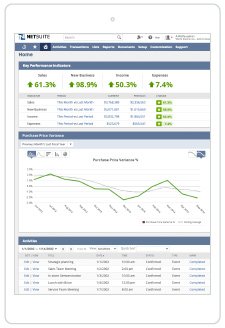NetSuite vs. Sage Intacct
Trust the solution used by more than 21,000 customers in more than 200 countries
The #1 Cloud ERP Solution
NetSuite is the intuitive, modern and comprehensive business management software for your company, providing a stable solution for today and the right platform for growth tomorrow.
NetSuite is used by over 21,000 customers to streamline and manage their critical business processes. With decades of experience working with fast-growing companies, NetSuite is able to share the insights it’s learned via industry-leading practices, including detailed workflows, role-specific dashboards and KPIs. First and foremost, NetSuite delivers comprehensive functionality to manage financials. But dollars and cents are only the beginning. Built to run a business, NetSuite offers one fully integrated suite spanning accounting/financials, CRM, HCM, planning and budgeting and more. Intacct maintains that a financial tool can satisfy your needs.
NetSuite scales with you as you succeed and grow. Companies large and small, including FORTUNE 100 companies, rely on NetSuite for complex intercompany closings and sophisticated reporting. Almost two-thirds of all software IPOs since 2011 went public using NetSuite. No matter where you begin, from startup mode to publicly traded company, NetSuite grows with your business.
Robust reporting across subsidiaries, multi-entity accounting, out-of-the-box and multi-currency reports are embedded in the platform. NetSuite generates reporting power from a fundamental architecture choice: the unified data model. You always know where to go for the latest information, and any report you access simply gives a different perspective on the same set of data. Intacct opts for an older subledger design relying on batch processing which can lead to data errors, slower processing times and lack of automation.
NetSuite for today and tomorrow.

Benefits
TIMELY INFORMATION AND INSIGHT
Improve business performance with real-time metrics and role-based dashboards.
CLOSE WITH CONFIDENCE
Accelerate the financial close while maintaining compliance with applicable accounting standards.
STREAMLINE THE
BACK-OFFICE
Eliminate errors with seamless integration between financials, CRM and ecommerce.
REPORT WITH ACCURACY
Drill down into the underlying details to understand the impact on your business.
































